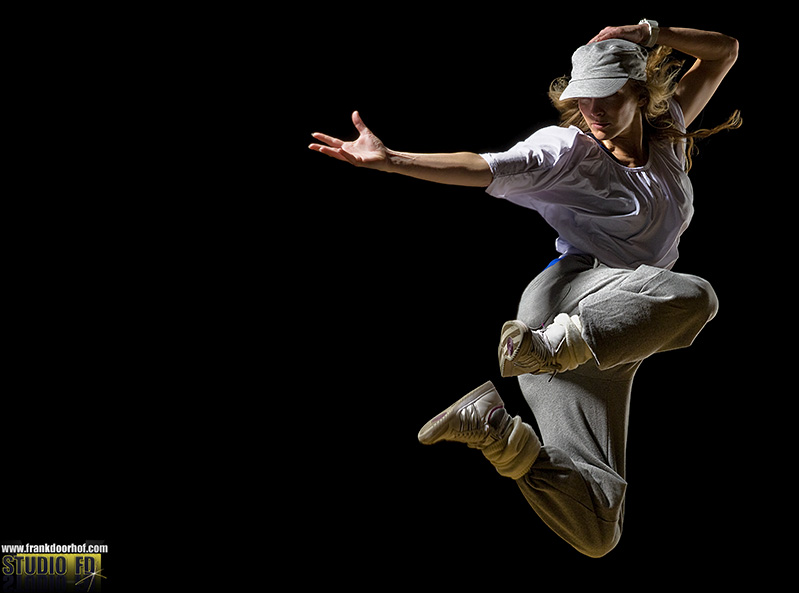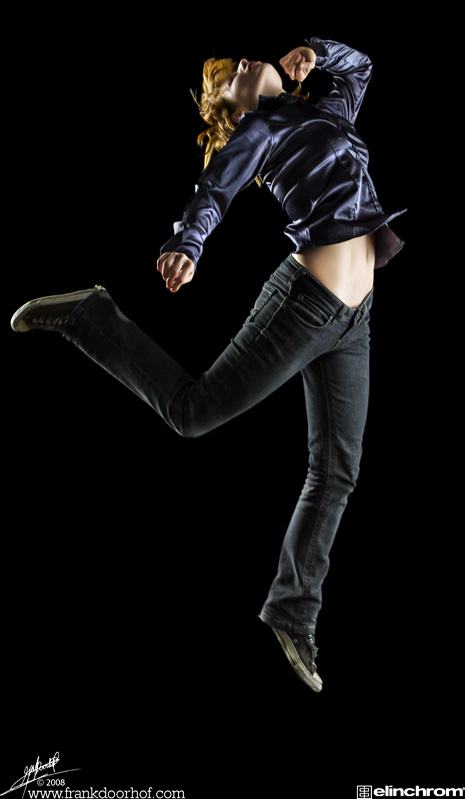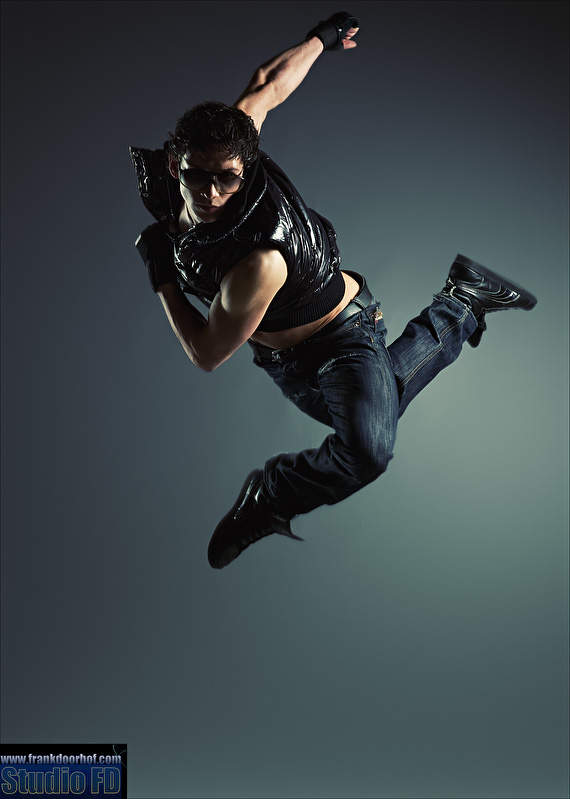Shooting movement…..
I think one of the most asked questions during my workshops were I also shoot motion must be the question “Frank, what shutter time do I use”. When I say that this in fact doesn’t matter (when shooting in the studio) I often get the question “You’re kidding, now tell me”. Somehow people have a problem of understanding shooting motion in the studio so I thought it would be interesting to do a small blog post with some tips about this subject.
 Understanding shutter times vs freezing
Understanding shutter times vs freezing
When we shoot in the studio we have a “problem” called Xsync. This means that there is a maximum speed on which we can set the shutter speed to be able to shoot a good flash image. For most cameras this is 1/125th. Some will argue that their cameras can really go up to 1/200th and although for SOME that might be true it immediately shows that the understanding of how studio work works is not there yet 🙂
When we shoot an image the camera will do the following :
The mirror will move up
The first shutter curtain will open
The second shutter curtain will follow
There is only a small moment in which the whole sensor is exposed to the light when we go to around 1/125, when we go lower this moment will become longer. But if we go higher it can happen that we see a nasty black bar in our image, a lot of people don’t know what this bar is…. well this is your second shutter curtain.
I hear you think…. 1/125th is NEVER enough to freeze motion, and indeed you are 100% right, but we are not freezing the motion with 1/125th, we are in fact freezing it with a lot more speed.
Strobe vs Camera
Every strobe you use has a certain speed, and I don’t mean the recycling speed, I really mean the speed of the strobe itself. For some strobes this will for example be 1/800 which is in fact not enough to really freeze motion, however when we reach the 1/2000 barrier it becomes much more interesting, when we break the 1/4000 barrier we are talking about real stopping power.
Within the Elinchrom system I use this means that I can really stop motion with my Rangers (Quadra and RX) with A heads. The A heads are the “action” heads and are faster than the S (standard) heads. When you use two of those heads together you get into the 1/5000 + range and you can indeed freeze a jumping model. And yes this happens with a shutter time on your camera of 1/125 or even slower. During one workshop I shot (just as a joke) a jumping model with a 1/15th of a second shutter time and she came out razor sharp.
To visualize this it’s very simple.
Remove your trigger from the camera and make sure that you only have your modeling lights on (like you would normally do), now take a shot at the setting you would normally take the shot with strobes, for example f11 with 1/125, and you will see that the image turns out…. black. Now lower the shutter speed to let’s say 1/50th and in most cases it will still be black.
Smaller apertures
When we want to freeze motion it’s best to set the aperture as small as possible to have maximum depth of field, this way the model can move a bit more freely and still be sharp. What I always do, which helps a lot, is lay a lens cap on the floor and let the model stand on the cap, now I prefocus and tell the model that this is the point where the action will have to take place, she/he will move away to make speed and she/he will jump over the cap making sure the “pose” is above the cap. This is impossible to do 100% so a smaller aperture really helps here.
Posing
According to some it’s impossible to pose a jump, well I couldn’t stress this point more than to say that this is simply 100% not true, but I have to say that is also very much depends on the model, some models are great jumpers (posers) others are well…… not so good.
However posing can be done the way you want it. I have several models that will do the jump and after the jump can make small changes, and ok the jump will be different but still there will be common look to the images and you can really change this to something you like, shooting tethered helps a HUGE deal with this, because you both can see what’s going on and point out what goes wrong, or what could be improved.
Stamina
Behind our camera it’s easy, jump, jump, jump, jump again, yeah almost there, jump, jump, jump again……. hello ? oh my you’re all right…..? call an ambulance.
Well we don’t want that of course, so give your model some time in between shots, and trust me according to most that’s not necessary, they can go on like this forever…. well trust me also on this one they can’t and you will see it in the shots. What I try to do is a maximum of let’s say 10 jumps and then we will evaluate the shots, I will offer the model something to drink (or force them to drink) and we discuss the new shots and than we continue. This way the jumps stay fresh and I won’t kill my model.
Tomorrow part II






Nice shots… I just found out (!!) that my D1x Nikon camera (9 years old model) has 1/16,000 second maximum shutter speed and 1/500 second shutter speed when on board flash used. That’s awesome. I am waiting to capture some cool shots with it. I also am thinking to move from flash to steady lights and reflectors for portraits (like I was doing years ago).
Don’t be too happy, there is a lot that doesn’t work with those speeds, as soon as HSS is kicking in there will be artifacts in the movement, plus the flash duration will be slower meaning less freezing action.
Just curious if it would also be possible to freeze motion using one or more 580EX and using the high speed sync functionality. (or the Nikon flashlights) in a studio setup?
Frans, I think if you set your speedlight to “quick flash” the flash duration is 1/2300th sec. which according to Frank is easily fast enough to freeze the action, the shutter speed is not important, the extremely short duration of the flash is what counts.
I hope I’ve understood the post correctly, and I hope my answer helps a bit.
Ian.
Yes, however do remember that if you use a lot of power with the “system” strobes they will be slower.